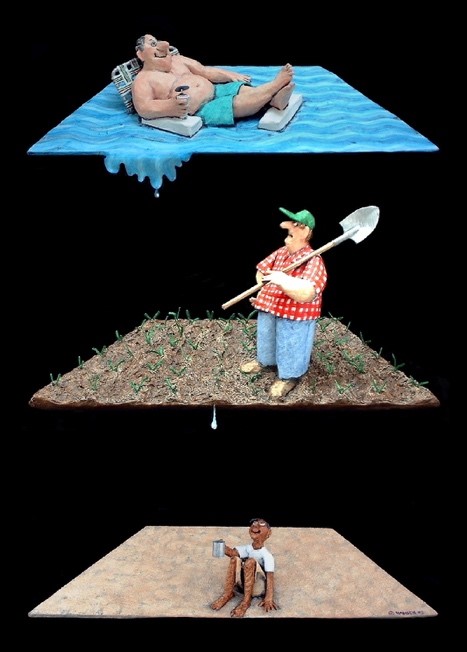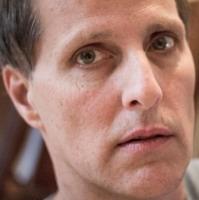Millard Schisler is Adjunct Faculty for the Online Master’s in Museum Studies at Johns Hopkins University. He lives and works with Digital Preservation in Brazil

I have always liked the image of the three-dimensional sculpture figures created by artist Stephen Hansen as a way to illustrate the “trickle-down economics” of the Reagan era – it is pretty much self-explanatory as to the “distribution” of wealth. This image also comes to my mind when I think of the international and national organizations that brand the need for digital preservation in their meetings and conferences and create manifestos and guidelines to steer us all. I am grateful for this work, and am not against these efforts and strategies, but many times these ideas seem to take a long time to trickle down to the bottom where everyday life is, much like this image.
By now, it seems that most of us are aware of the need for digital preservation, and by living and working in Brazil, the sense of urgency and need for long-term preservation of digital assets is a current feeling of most of us working in libraries, archives, museums, universities and other institutions. But overall, in Brazil, there has been very little in terms of resources, education and programs coming from the main funding organizations, governmental agencies and programs at city, state and federal level that should be leaders in the implementation of digital preservation strategies.
If the “big” does not start, we need to start small! Build solutions from the ground up.
I must refer here to the document by Anne R. Kenney & Nancy Y. McGovern on “The Five Organizational Stages of Digital Preservation.” This reference document was written 16 years ago and is still relevant, and reminds me of the need to start small, and build up digital preservation programs, starting with local concern – (1) acknowledging, (2) acting, (3) consolidating, (4) institutionalizing and finally (5) externalizing our work, approaches and activities. This does not mean that we give up on pushing for more funding and programs coming from the top, but we do not wait for this to happen.
Our strategy must include building digital preservation from the ground up in as many places as we can have an impact. A small museum is building their program of preserving their digital assets; a non-governmental organization is creating a program for preserving and giving access to all their production of documents, images and videos; a not for profit organization started a digitization program that is now turning into a digital preservation program for the entire organization; a community center is becoming aware of the need to preserve the digital assets of their community, they are at the acknowledging phase and will soon act. I would like to see more and more examples like these sprouting all over the place.
We celebrate World Digital Preservation Day-2019 as a reminder that we have started to make a difference, the seeds that we have sowed are sprouting, and that we still have a lot more work ahead of us!
